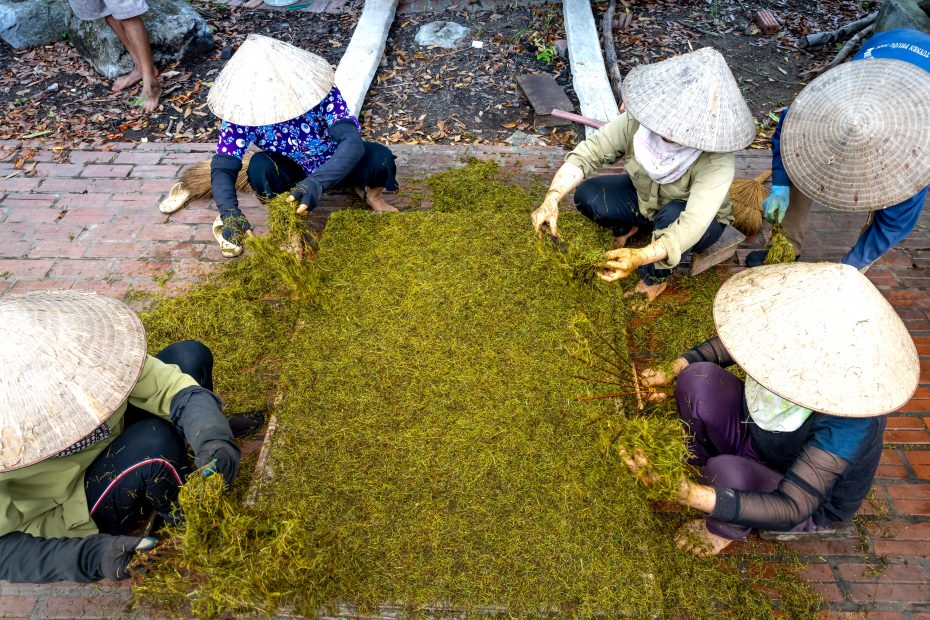Until 1843, it had always been thought, thanks to Charles Linnaeus’ 1743 theory, that there were two tea plants namely thea viridis (for green tea) and thea bohea (for black tea) but Robert Fortune, during his first trip to China, discovered that the tea plant was actually only one (Thea Sinensis) and that the difference between green tea and black tea was the leaf processing processes.
In 1935, at the 6th International Botanical Congress in Amsterdam, the plant was reclassified as Camellia Sinensis (Linneaus) O. Kuntze. Otto Kuntze was the German botanist who placed the plant in the Camellia genus in 1887.
There are 2 varieties of Camellia Sinensis: the Camellia Sinensis Sinensis, typical of China, and the Camellia Sinensis Assamica, referring to the plant derived from the Assam region of India.
Processing is, therefore, what differentiates one tea from another.
One macro-distinction that can be made is to divide teas into:
– Green Teas
– Oxidized teas
– Fermented Teas
Tea Processing Steps
Withering: that is, the dehydration of tea leaves so that the leaf softens and does not break. This process can take place in the sun, on racks or in forced-air kilns. It takes several hours depending on the method.
Fixation: enzymatic deactivation and thus slowing down the oxidation process. It occurs through the administration of heat that can be implemented in hot air ovens (short duration), in pans or steam.
Rolling: i.e., the manipulation of the leaves that allows the plant cells, but not the leaves, to break down and then allow oxidation. This can be done by manual or mechanical manipulation.
Oxidation: after rolling, leaves are placed in beds or oxidation tanks where they remain for 6 to 12 hours.
Storage: heaping of the leaves left covered for several hours. This process is only for yellow tea, despite the fixation, slight oxidation occurs during this stage.
Blue-green formation: a stage exclusive to Wulong teas. The leaves are placed in special cylinders whose protrusions hit the edge of the leaf blade making the leaf the typical blue-green color.
Drying: The only stage common to the processing of all teas. It is the process of dehydrating the leaf which goes on to lose about 90 percent of its weight.
Fermentation: It occurs through the presence of microorganisms. It requires an anaerobic, humid, warm, and light-free environment.
Ripening: Resting phase of the leaves, it can last 2-3 months.
According to Chinese Classification, teas are divided into 6 categories:
- Green tea – Lǜchá 绿茶
Green tea is neither fermented nor oxidized
Processing processes: Fixing – Rolling – Drying
- Yellow tea – Huángchá 黄茶
Slightly oxidized
Processing processes: Fixing – Rolling – Storage – Drying
- White tea – Báichá 白茶
White tea is slightly oxidized.
Processing processes: Withering – Drying.
- Blue-green tea (or wulong or semi-oxidized) – Qīngchá 青茶
Wulong tea has a degree of oxidation: 30-60%.
Processing processes: Withering – Blue-green formation – Rolling – Oxidation – Drying
- Red tea (or what we call “black tea”) – Hóngchá 红茶
Red tea has 100% oxidation.
Processing processes: Withering – Rolling – Oxidation
- Black tea (or Pu’er or post-fermented) – Hēichá 黑茶
Fermented 100%
Processing processes: Fixing – Rolling – Fermentation – Second rolling – Drying – Ripening
The various types of tea can be combined to form blends or be flavored such as lychee tea and jasmine tea. There are also “herbal teas” or infusions that do not necessarily feature camellia Sinensis leaves but other types of herbs, fruits, and flowers that can provide beneficial properties once infused.
